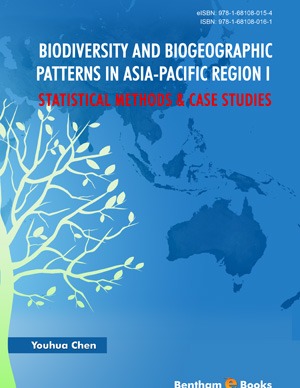Abstract
SHS investigation development is considered from the geographical and historical viewpoint. 3 stages are described. Within Stage 1 the work was carried out in the Department of the Institute of Chemical Physics in Chernogolovka where the scientific discovery had been made. At Stage 2 the interest to SHS arose in different cities and towns of the former USSR. Within Stage 3 SHS entered the international scene. Now SHS processes and products are being studied in more than 50 countries.
Abstract
In this chapter, the relative importance of climatic variability and dispersal limitation on the distribution of endemic birds in mainland territorial region of China is analyzed using inhomogeneous Poisson process models. Model comparison is performed through Akaike Information Criteria (AIC). The results showed that, over the 42 species studied, climatic variability was more important than dispersal limitation for explaining the spatial distributional patterns of 6 species. In contrast, the spatial distribution of 10 species was better explained by the dispersal limitation mechanism. Both climatic variability and dispersal limitation play equal roles on structuring the spatial distributional record patterns of the remaining 26 endemic bird species. In conclusion, different species responses climatic fluctuation in various ways and their migration over neighboring regions may result into the diversified influence of dispersal limitation and climatic variability. Dispersal limitation seems more important than climatic variability on structuring the distribution of endemic taxa, at least for the endemic birds of mainland China.
Keywords:
Akaike Information Criteria, avian endemism, climatic niche, dispersal limitation, distributional patterns, endemic species, homogeneous processes, model comparison, niche versus neutrality, spatial ecology, spatial statistics.
Recommended Chapters
We recommend

Authors:Bentham Science Books






